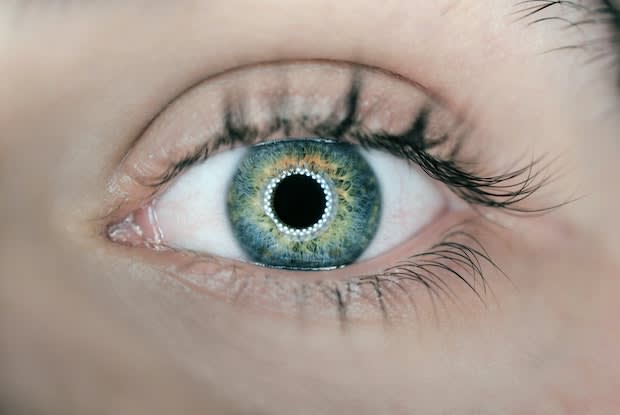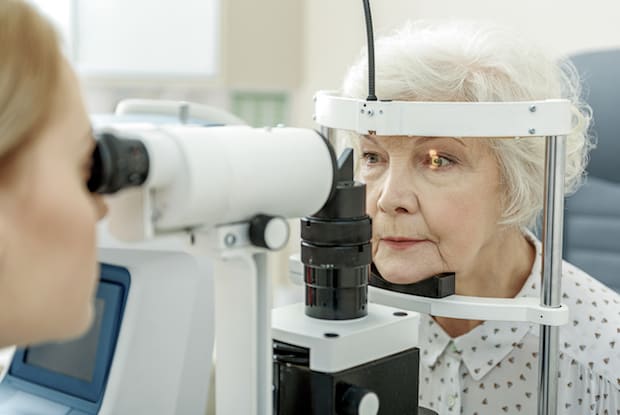Types of Glaucoma
III. Secondary Open-Angle Glaucoma
What is Glaucoma?
Glaucoma is a group of eye disorders characterized by damage to the optic nerve. This nerve is essential in the functioning of the eye and healthy vision. Glaucoma usually occurs due to abnormally high pressure in the eye. If this pressure damages the optic nerve, a person's vision can begin to change. In advanced stages, glaucoma can cause blindness. Glaucoma is the leading cause of blindness in adults over 60 years old. [1]
Glaucoma-related blindness is irreversible. It is important to get annual eye exams so your eye doctor can keep track of your eye health. If a doctor determines you have early signs of glaucoma, you may be prescribed medications like Lumigan eye drops to help slow the disease's progression. Glaucoma is a chronic disorder and must be treated for the rest of your life.
There are many different types of glaucoma. The three most common categories include angle-closure, secondary open-angle, and open-angle glaucoma. Within these categories, there are more specific types, and the signs and symptoms differ. Read on to learn more about the symptoms and risk factors for the different types of glaucoma. [1]
Open-angle is the most common type of glaucoma, and it comes in different forms. Open-angle glaucoma occurs when there is a problem with the drainage angle of the eye. The drainage angle is the eye area where the colored part (iris) meets a tissue called the trabecular meshwork. This drainage problem can occur even if the eye's angle appears to be open and normal in microscopic exams. This type of glaucoma can be difficult to diagnose because there are often no warning signs or obvious symptoms in the beginning stages. Unfortunately, those with open-angle often do not even know they have this eye disease until the damage is severe. [2] The few symptoms of open-angle glaucoma can include: In this type of glaucoma, the drainage angle of the eye is open, but the aqueous humor (eye fluid) cannot drain properly. When this drainage system is not functioning, it can become clogged and lead to an increase in intraocular pressure. In most cases, this type of glaucoma is painless and causes a loss of vision if left untreated. This type typically runs in families and can be diagnosed with a diagnostic evaluation with ophthalmoscopy. An ophthalmoscopy test allows a doctor to see the eye's interior surface, including the retina, optic disc, macula, fovea, and posterior pole. [2] This type of glaucoma occurs when the optic nerve is damaged even if the eye pressure is not very high. Doctors do not know why some people are at higher risk for this type of glaucoma than others. Still, those at higher risk include people of Japanese ancestry, those with a family history of normal-tension glaucoma, and those with systemic heart disease. Doctors treat this type of glaucoma using medications to reduce eye pressure such as Lumigan eye drops. [3] In most cases, glaucoma occurs in people over the age of 40, but it can occur at any age. In the case of congenital glaucoma, eye disease is present in infants and young children. This can occur due to abnormal development in the drainage angle of the eye. Children with congenital glaucoma may experience watery eyes, light sensitivity, cloudy corneas, and eyes that may appear larger than normal. [2] Secondary glaucoma is a side effect of another underlying condition or trauma. This type of glaucoma refers to any form of this eye disease that results in increased eye pressure, which can lead to optic nerve damage and vision loss. This type can be caused by certain drugs, cataracts, diabetes, or eye injury. In general, these forms of glaucoma occur due to abnormal deposits of material in the drainage angle. [2] This type of glaucoma occurs when the pigment granules in the back of the iris (colored part of the eye) break off into the clear fluid produced within the eye. When this happens, it can lead to permanent damage to the drainage system of the eye and lead to increased pressure. This type is more common in young, Caucasian males who suffer from near-sightedness. Interestingly, exercise causes an increase in eye pressure with pigmentary glaucoma. Symptoms can include less pigment dispersion, blurry vision, and rainbow-colored halos around lights. [4] Angle-recession glaucoma occurs when there is damage or injury to the eye. Common blunt traumas to the eye can include getting punched, elbowed, or hit in the eye with a ball. When you experience an injury, the tissue near the iris’ peripheral edge can tear and lead to bleeding inside the eyes. The blood and other pieces of waste can clog the drainage system and raise eye pressure. It is important to get this type treated before the damaged drain canals build up scar tissue. [5] There is lots of research to support the fact that steroids can increase your risk of developing glaucoma. Steroids are used for several conditions to treat inflammatory, allergic, and immunologic diseases. Steroids can come in several different doses and types like pills, inhalers, shampoo, injections, and ear drops. Steroids can lead to glaucoma because they can cause changes in the aqueous fluid outflow system, resulting in increased eye pressure. Over 90 percent of those with open-angle glaucoma develop a steroid response. It is important to get yearly check-ups on your eyes if you are using steroid medications. [6] This type of glaucoma is much rarer. In the case of angle-closure, the iris is not as wide as it should be. The iris begins to bunch up over the drainage canals, resulting in the pupil enlarging too much or too quickly. This can lead to some unpleasant disorientation when entering a dark room. Some common symptoms of this type of glaucoma include eye pain, nausea, headaches, and blurred vision. Treatment for this glaucoma can include laser surgery or surgery to unblock the drainage canals. [7] This type of glaucoma occurs when the eye drainage angle of the eye becomes completely blocked, and the pressure in the eye rises quickly. This phenomenon is described as an angle-closure attack. An attack like this can cause blindness in a short period if treatment is not sought. Because symptoms include headache and nausea, the symptoms can be misinterpreted as a migraine. Luckily, angle-closure can be treated with sight-saving laser treatments. [2] This type of glaucoma differs slightly from the other forms of glaucoma. In the case of neovascular glaucoma, the eye's angle is closed by the formation of new blood vessels on the iris and in the eye's drainage structures. Glaucoma occurs when layers of blood vessels obstruct the drainage angle. Symptoms of neovascular glaucoma can result in red, painful eyes, and your vision may become abnormal. Risk factors for neovascular glaucoma can include high blood pressure, diabetes, and heart disease. [8] The content in this article is intended for informational purposes only. This website does not provide medical advice. In all circumstances, you should always seek the advice of your physician and/or other qualified health professionals(s) for drug, medical condition, or treatment advice. The content provided on this website is not a substitute for professional medical advice, diagnosis or treatment.
Open-Angle Glaucoma
a. Primary Open-Angle Glaucoma
b. Low-Pressure Glaucoma (Normal-Tension) Glaucoma
c. Congenital Glaucoma

Secondary Open-Angle Glaucoma
a. Pigmentary Glaucoma
b. Angle-Recession Glaucoma
c. Steroid-Induced Glaucoma
Angle-Closure Glaucoma

a. Acute Angle-Closure Glaucoma
b. Neovascular Glaucoma
